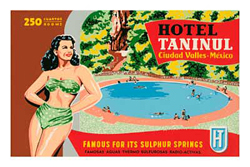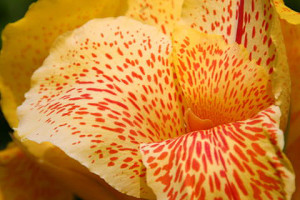 Michoacan State is so diverse geographically and culturally it gives the impression of being ‘a country within a country.’ México’s 16th largest state boasts over 100 miles of tropical Pacific shoreline rising up to the temperate Sierra Madre Occidental central plateau and bordering on the states of México, Guerrero, Colima, Jalisco, Guanajuato and Queretaro.
Michoacan State is so diverse geographically and culturally it gives the impression of being ‘a country within a country.’ México’s 16th largest state boasts over 100 miles of tropical Pacific shoreline rising up to the temperate Sierra Madre Occidental central plateau and bordering on the states of México, Guerrero, Colima, Jalisco, Guanajuato and Queretaro.
Michoacan is a Nahuatl word loosely translating to the ‘place of the fishermen’, easily understood after experiencing a quiet morning watching the pescadero’s butterfly-shaped nets gracefully break the mirror-calm surface of Lago de Patzcuaro. But, that was then and this is now. Unfortunately, many of the species in Lake Patzcuaro are now classified ‘Critically Endangered.’
Talented Michoacan artisans live in picturesque mountain communities at altitudes of 7,000 to 7,500 feet. Skilled hands create traditional arts and crafts utilizing refined techniques passed through generations. Tzintzuntzan is known for fanciful pottery and imaginative straw work, Santa Clara del Cobre for striking, copper objects, Capua for Catrina skeletons, Ocumicho for distinctively individual clay sculptures and much sought-after devil effigies and Paracho for legendary handcrafted acoustic guitars.
I excitedly boarded a bus in San Martin Teotihuacan. Destination – my primera Fiesta de los Muertos! First stop Quiroga! The first thing to catch my attention was an array of antiquated pickup trucks spilling over with flowers of every color imaginable. I was impressed by young girls carrying younger siblings on their hips, backs and shoulders – cheerfully – without complaint. The children they were carrying were almost as big as they were.
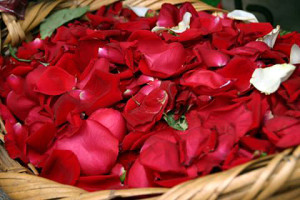 In Zamora I saw block after block of fresh fruits and vegetables waiting for pickup – crated and piled ‘mile-high’. My first stop was the Unfinished Cathedral – otherwise named the Sanctuary of Our Lady of Guadalupe. After that I went to pay a visit to the Church of the Sacred Heart of Jesus – a Gothic church featuring two dozen stained glass windows, ten representing musical angels. I struck up a conversation with Maria, a charming abuelita – grandmother, who generously invited me to her home for Christmas dinner.
In Zamora I saw block after block of fresh fruits and vegetables waiting for pickup – crated and piled ‘mile-high’. My first stop was the Unfinished Cathedral – otherwise named the Sanctuary of Our Lady of Guadalupe. After that I went to pay a visit to the Church of the Sacred Heart of Jesus – a Gothic church featuring two dozen stained glass windows, ten representing musical angels. I struck up a conversation with Maria, a charming abuelita – grandmother, who generously invited me to her home for Christmas dinner.
Time stands still in Capacuaro, a magical pueblo of wooden homes tucked into lush green mountain vegetation. Behind the walls of the small wooden homes, I got flash peeks of carpenters decorating rustic, regional furniture with heart and flower symbols. The bandstand in the quiet town square was draped with yards of colorful material delicately swaying in the gentle autumn breeze – a novel way to publicize market day. In the village’s naive angel-clad church, Jesus, Mary and all their companions were dressed in traditional P’urhépecha clothing – a sight that brought a smile to my face. Capacuaro captured my heart and will remain in my dreams forever.
My entry into downtown Uruapan almost met with a three-car collision after which my distraught cab driver kept frantically apologizing and waving his hands. After that hair-raising experience he rapidly deposited me and my few belongings in the center of town and disappeared in a flash.
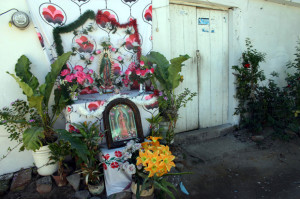 Excitement was in the air in Uruapan – one of México’s oldest cities! I joined the crowd to watch the Danza de los Viejitos, a humorous dance portraying the antics of old men and spotted two nervous chipmunks on shiny leashes. After walking several blocks up Uruapan’s sloped Mercado, I arrived at a Mexican slow food court where I dined on fish tamales, Michoacan-style helado – ice cream and café con leche.
Excitement was in the air in Uruapan – one of México’s oldest cities! I joined the crowd to watch the Danza de los Viejitos, a humorous dance portraying the antics of old men and spotted two nervous chipmunks on shiny leashes. After walking several blocks up Uruapan’s sloped Mercado, I arrived at a Mexican slow food court where I dined on fish tamales, Michoacan-style helado – ice cream and café con leche.
Next morning I visited Rodilla del Diablo – ‘the Devil’s Knee’ – and Cupatitzio River – ‘the river that sings’. After lunch I wandered through the Eduardo Ruiz National Park and took photos of colorful, willowy orchids. I was thrilled and happy to capture the diversity and splendour of wild orchids in their natural habitat. A few months later, I saw a young girl selling ‘forbidden fuchsia orchids’ in Guadalajara’s Mercado Corona.
That evening I decided to go to a movie. The only one playing was a Jack Nicholson movie I had seen in Canada and didn’t particularly want to sit through again but thought – what the heck – this is México! After the movie I hailed a cab to return to my hotel. Just as I settled in for the ride back to the hotel, a cop car pulled up, a cop walked over to the cab and took my cab driver away in handcuffs. I was left sitting in a cab without a driver very late at night on a disturbingly dark, quiet street. A few minutes later, a cruiser appeared out of thin air, a different cab driver jumped out of the cop car, into the cab, grabbed the wheel and fired me off to my hotel in what seemed like a matter of seconds – without a word of explanation. What’s with the cab drivers in Uruapan!
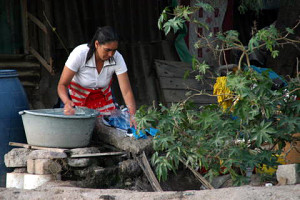 The next day, after a bouncy bus ride, I visited my artisan friends in Patzcuaro’s Town Plaza. After trading a pair of hand-made sandals for an obsidian necklace I wandered around town purchasing tallow candles, pan do los muertos, sugar skulls and a dexterously embroidered rebozo that I promptly lost on the bus on the way to Paracho. That evening I drank too much charanda, a hot sugar cane beverage. It sure didn’t taste like it was that strong! Next time I’ll warm up with a steamy cup of atole.
The next day, after a bouncy bus ride, I visited my artisan friends in Patzcuaro’s Town Plaza. After trading a pair of hand-made sandals for an obsidian necklace I wandered around town purchasing tallow candles, pan do los muertos, sugar skulls and a dexterously embroidered rebozo that I promptly lost on the bus on the way to Paracho. That evening I drank too much charanda, a hot sugar cane beverage. It sure didn’t taste like it was that strong! Next time I’ll warm up with a steamy cup of atole.
Finally – Fiesta de los Muertos! First stop at Tzintzuntzan pueblo was to picnic in the courtyard of the Ex-Convento de San Francisco surrounded by thirty-three 500-year-old gnarly olive trees. The trees have stood the test of time and were apparently the first olive trees brought to the Americas by Bishop Vasco de Quiroga, a respected judge sent to Patzcuaro by the Catholic Church in 1536. Quiroga helped the indigenous people to become self-sufficient through education, farming, artistic skills. Quiroga’s reputation as a hero to the people has carried through the centuries – he was a hero then and he’s a hero now. In Mexico – once a hero – always a hero.
Next stop – Tzintzuntzan archaeological ruins, ‘the place of the hummingbirds’. My eyes lit up – I had chosen the perfect vantage poiont! Immediately below the pyramid enormous marigold-clad sugarcane altars were being erected in the cemetery – square for men and rounded for females. The air was ripe with music, laughter and the intoxicating aromas of candle wax and Hierba de Santa Maria. The intense coral sky gradually reflected hundreds of candles. ‘Mourners’ laid out offerings of food and settled in for an overnight vigil in commemoration of their loved ones- not present in body but present in spirit – and a lot of spirits!
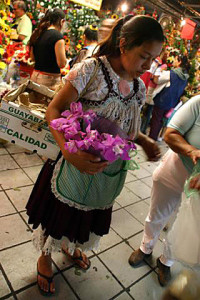 I was seduced by the heart and soul of Michoacan and captivated by the bird-like P’urhépecha mujeres hermosa’s double cross-stitched blouses, embroidered aprons and pleated plaid skirts – but how did they end up wearing plaid skirts in the middle of México? Is there a Scottish Connection? The next morning, I patiently waited for the bus that would take me back to my home in Tizapan el Alto, Jalisco, and vowed to return to Michoacan to solve the mystery of the plaid skirts.
I was seduced by the heart and soul of Michoacan and captivated by the bird-like P’urhépecha mujeres hermosa’s double cross-stitched blouses, embroidered aprons and pleated plaid skirts – but how did they end up wearing plaid skirts in the middle of México? Is there a Scottish Connection? The next morning, I patiently waited for the bus that would take me back to my home in Tizapan el Alto, Jalisco, and vowed to return to Michoacan to solve the mystery of the plaid skirts.
* * *
This article was written by Heather Hess, creator of CanGoMexico. Heather is a freelance copywriter, photographer and videographer. When she’s not busy working on CanGoMexico, Heather is either talking about Mexico or working on her novel about her México experiences. Please contact Heather at cangomexico@gmail.com or skype: heatherhess13 – Viva México!



